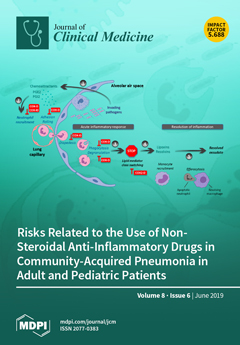Background: Warfarin requires regular monitoring with the time in therapeutic range (TTR), a common indicator of control and TTR > 70% is indicative of efficient anticoagulation. The SAMe-TT
2R
2 (sex, age, medical history, treatment, tobacco use, race) model has been utilised
[...] Read more.
Background: Warfarin requires regular monitoring with the time in therapeutic range (TTR), a common indicator of control and TTR > 70% is indicative of efficient anticoagulation. The SAMe-TT
2R
2 (sex, age, medical history, treatment, tobacco use, race) model has been utilised as a predictor of warfarin control, with a score ≥ 2 indicative of poor control. However, it has been suggested that race may be over-represented in this model. To date, no Australian studies have applied this model, possibly because race is not routinely recorded. Therefore, the aim of this study was to apply the SAMe-TT
2R
2 model in an Australian population on warfarin managed by both a warfarin care program (WCP) and general practitioner (GP). Methods: Retrospective data was collected for patients receiving warfarin via a WCP in Queensland and whilst being managed by a GP. Patient data was used to calculate the SAMe-TT
2R
2 score and the TTR for each patient. Mean TTR was used for analysis and comparison with the categorised SAMe-TT
2R
2 score. Results: Of the 3911 patients managed by a WCP, there was a significantly lower mean TTR for patients with a SAMe-TT
2R
2 score ≥ 2 compared to 0–1 (78.6 ± 10.7% vs. 80.9 ± 9.5%,
p < 0.0001). Of these patients, 200 were analysed whilst managed by a GP and the categorised SAMe-TT
2R
2 score did not result in a statistically different mean TTR (69.3 ± 16.3% with 0–1 vs. 63.6 ± 15.0% with ≥2,
p = 0.089), but a score ≥2 differentiated patients with a TTR less than 65%. Conclusions: The SAMe-TT
2R
2 model differentiated Australian patients with reduced warfarin control, despite the exclusion of race. In Australia, the SAMe-TT
2R
2 score could assist clinicians in identifying Australian patients who may obtain reduced warfarin control and benefit from additional interventions such as a dedicated WCP.
Full article






